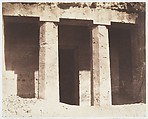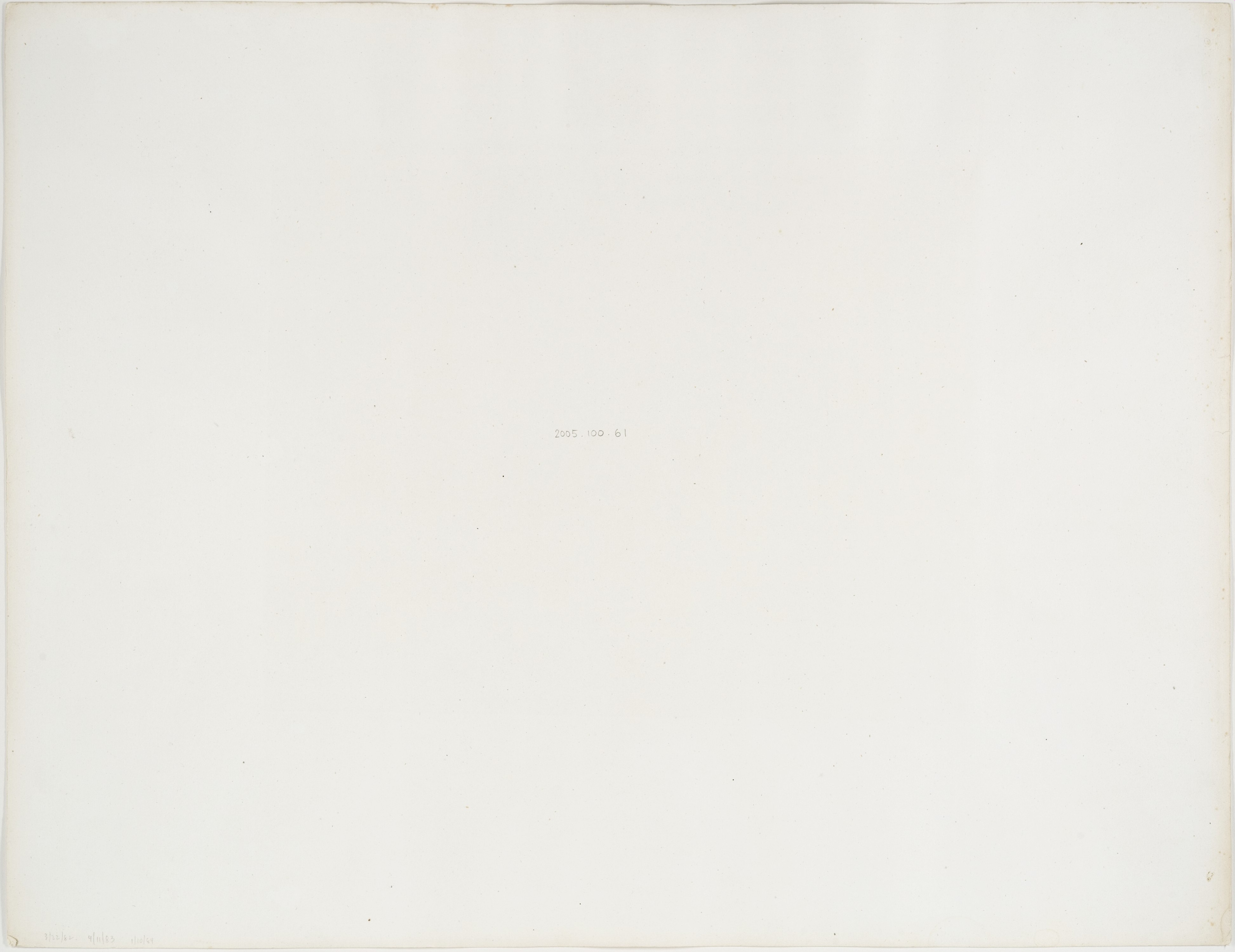Béni Haçan, Architecture Hypogéenne, Tombeau d'Amoneï
Félix Teynard French
Not on view
By the time Teynard set out for Egypt with a large-format camera, he was thoroughly accomplished in the waxed-paper negative technique, which had been perfected only the year before in Paris by Gustave Le Gray. One of the drawbacks of using paper negatives was that the paper fibers softened the picture's resolution. The best practitioners of the technique, however, turned its faults to advantage and organized their pictures around masses of deep shadow and suffused light, recognizing that a few well-chosen details could give dramatic relief to architectonic structures. This photograph is a masterpiece of the genre. It represents a Middle Kingdom rock-cut tomb at Beni-Hasan (ca. 1900 b.c.), 105 miles upriver from Cairo.
Within the bold composition of light and dark, Teynard placed the delicate form of a European bentwood cane against the column. Like a surveyor's measure, the cane indicates scale. It also functions as Teynard's personal signature, but unlike the graffiti to the right, it was temporary and did not deface the monument.
Due to rights restrictions, this image cannot be enlarged, viewed at full screen, or downloaded.
This artwork is meant to be viewed from right to left. Scroll left to view more.



